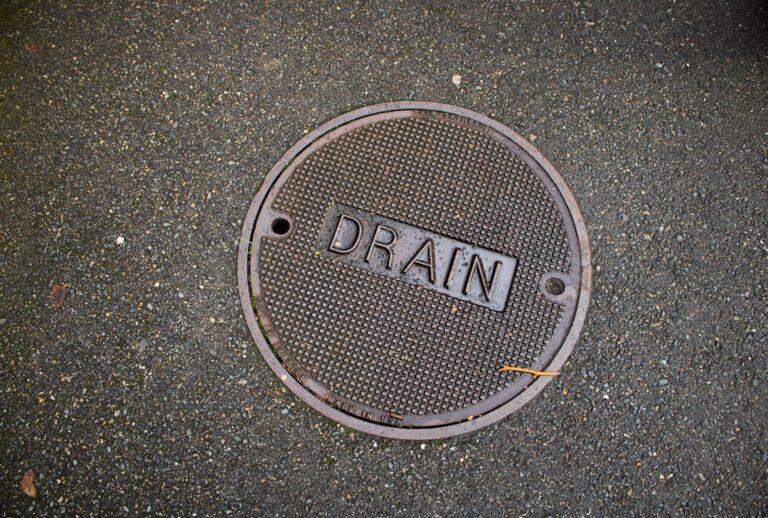The Montessori Method, a revolutionary approach to education, was developed by Dr. Maria Montessori in the early 20th century. Born in Italy in 1870, Montessori was one of the first female physicians in her country.
Her medical background, combined with her keen observations of children, led her to explore the ways in which they learn and develop. In 1907, she opened the Casa dei Bambini, or Children’s House, in a poor neighborhood of Rome. This innovative school was designed to cater to the needs of children from ages three to six, providing them with a prepared environment that encouraged independence and self-directed learning.
Montessori’s approach was groundbreaking for its time, as it shifted the focus from traditional teacher-led instruction to a child-centered model. She believed that children learn best when they are free to explore their interests within a structured environment. Her methods emphasized hands-on learning and the importance of sensory experiences.
Over the years, Montessori’s ideas gained traction, leading to the establishment of schools worldwide. By the mid-20th century, her educational philosophy had spread beyond Italy, influencing educators and parents across various cultures and societies. Today, Montessori education is recognized globally, with thousands of schools implementing her principles.
Key Takeaways
- The Montessori Method was developed by Dr. Maria Montessori in the early 20th century and is based on her observations of children’s learning behaviors.
- The Montessori Method emphasizes independence, freedom within limits, and a holistic approach to education, focusing on the development of the whole child.
- In a Montessori classroom, the teacher serves as a guide and facilitator, rather than a traditional lecturer, and encourages self-directed learning and exploration.
- Hands-on learning is central to Montessori education, as it allows children to engage with materials and concepts in a tangible and experiential way.
- The Montessori classroom environment is carefully designed to promote independence, order, and a sense of community, with child-sized furniture and materials arranged in an accessible and inviting manner.
Understanding the Principles of the Montessori Method
At the core of the Montessori Method are several key principles that guide its implementation. One of the most fundamental is the belief in the innate potential of every child. Montessori posited that children are naturally curious and possess an intrinsic desire to learn.
This perspective encourages educators to create environments that nurture this curiosity rather than stifle it through rigid curricula. The method promotes self-directed learning, allowing children to choose their activities and work at their own pace, fostering a sense of autonomy and responsibility. Another essential principle is the concept of mixed-age classrooms.
In a Montessori setting, children of varying ages learn together, which facilitates peer learning and collaboration. Older children often take on mentorship roles, reinforcing their own knowledge while helping younger peers grasp new concepts. This dynamic not only enhances social skills but also cultivates a sense of community within the classroom.
Additionally, Montessori education emphasizes hands-on learning through specially designed materials that engage multiple senses, allowing children to explore abstract concepts in a tangible way.
The Role of the Teacher in a Montessori Classroom

In a Montessori classroom, the role of the teacher is markedly different from that in traditional educational settings. Rather than being the primary source of knowledge, the teacher acts as a guide or facilitator. This shift in responsibility allows children to take ownership of their learning experiences.
Teachers observe students closely to understand their interests and developmental needs, using this insight to tailor activities that promote growth and exploration. Moreover, Montessori teachers are trained to create an environment that encourages independence. They introduce materials and lessons at appropriate times but refrain from imposing their own agendas on students.
This approach fosters a sense of trust between teachers and students, as children feel respected and valued in their learning journeys. The teacher’s role also includes maintaining order within the classroom and ensuring that materials are accessible and well-organized, which is crucial for promoting self-directed exploration.
The Importance of Hands-On Learning in Montessori Education
| Benefits of Hands-On Learning in Montessori Education | Statistics |
|---|---|
| Improved Retention of Information | Research shows that hands-on learning can improve information retention by up to 85%. |
| Enhanced Problem-Solving Skills | Students who engage in hands-on learning activities demonstrate 20% higher problem-solving skills. |
| Increased Engagement | Hands-on learning increases student engagement by 70% compared to traditional methods. |
| Development of Fine Motor Skills | Montessori students who engage in hands-on activities show a 30% improvement in fine motor skills. |
Hands-on learning is a cornerstone of the Montessori Method, as it allows children to engage with concepts in a tangible way. This experiential approach is rooted in the belief that children learn best through direct interaction with their environment.
For instance, consider the use of geometric solids in a Montessori classroom. These three-dimensional shapes allow children to explore concepts such as volume and surface area through tactile experiences rather than abstract memorization. By manipulating these materials, children develop a deeper understanding of mathematical principles while honing their fine motor skills.
This hands-on engagement not only makes learning enjoyable but also reinforces cognitive development by allowing children to make connections between their experiences and theoretical knowledge.
The Montessori Classroom Environment
The environment in a Montessori classroom is meticulously designed to support independent learning and exploration. Classrooms are typically organized into distinct areas that focus on different subjects such as practical life skills, sensory activities, mathematics, language, and cultural studies. Each area is equipped with age-appropriate materials that are accessible to children, promoting autonomy and encouraging them to choose their activities based on their interests.
The aesthetic aspect of the classroom is equally important; it is often characterized by natural light, open spaces, and minimal distractions. This thoughtfully curated environment fosters concentration and allows children to immerse themselves fully in their work. Additionally, classrooms are often adorned with real-life objects and materials that reflect the world outside, bridging the gap between academic learning and everyday life.
The Benefits of Montessori Education for Early Childhood Development

Montessori education offers numerous benefits for early childhood development that extend beyond academic achievement. One significant advantage is the promotion of independence and self-discipline. By allowing children to make choices about their learning activities, they develop decision-making skills and learn to take responsibility for their actions.
This sense of agency fosters confidence and resilience as they navigate challenges independently. Social development is another critical benefit of Montessori education. The mixed-age classroom structure encourages collaboration and communication among peers.
Children learn valuable social skills such as empathy, cooperation, and conflict resolution as they interact with one another during group activities or while working side by side on individual projects. These interactions help cultivate a sense of community within the classroom, where respect for others’ ideas and contributions is paramount.
Implementing Montessori Principles at Home
Parents can successfully implement Montessori principles at home by creating an environment that encourages independence and exploration. One effective strategy is to provide children with opportunities for choice in their daily activities. For example, parents can set up a designated play area with various materials—such as art supplies, building blocks, or books—allowing children to select what they want to engage with during playtime.
Additionally, incorporating practical life skills into daily routines can reinforce Montessori principles at home. Involving children in household tasks such as cooking, cleaning, or gardening not only teaches them valuable skills but also fosters a sense of accomplishment and responsibility. By allowing children to participate actively in family life, parents can nurture their independence while reinforcing the idea that learning occurs everywhere—not just within the confines of a classroom.
Challenges and Criticisms of the Montessori Method
Despite its many advantages, the Montessori Method is not without its challenges and criticisms. One common concern is the perceived lack of structure in Montessori classrooms compared to traditional educational settings. Critics argue that this freedom can lead to chaos or disengagement among some students who may thrive under more direct instruction or guidance.
The challenge lies in finding a balance between providing autonomy while ensuring that all students remain engaged and focused on their learning objectives. Another criticism revolves around the accessibility of Montessori education. While there are many public Montessori schools available today, many remain private institutions with tuition costs that can be prohibitive for some families.
This exclusivity raises questions about equity in education and whether all children have equal access to this innovative approach. Furthermore, there is ongoing debate about how well Montessori education prepares students for standardized testing environments prevalent in many educational systems today. In summary, while the Montessori Method has transformed early childhood education through its child-centered approach and emphasis on hands-on learning, it faces challenges related to structure and accessibility that warrant consideration as educators continue to explore effective teaching methodologies for diverse learners.
If you are interested in exploring the philosophies of influential thinkers, you may want to read about the educational approach of Maria Montessori. Montessori education emphasizes independence, freedom within limits, and respect for a child’s natural psychological, physical, and social development. To delve deeper into educational philosophies, you can check out an article on the relationship of sociology with other social sciences here. This article discusses how sociology interacts with disciplines like psychology, anthropology, and economics to provide a comprehensive understanding of society.
FAQs
What is Montessori education?
Montessori education is an educational approach developed by Dr. Maria Montessori that is based on the principles of self-directed activity, hands-on learning, and collaborative play. It emphasizes the development of the whole child – physically, socially, emotionally, and cognitively.
What are the key principles of Montessori education?
The key principles of Montessori education include mixed-age classrooms, student choice of activities, uninterrupted work periods, and a focus on hands-on, sensory-based learning. The approach also emphasizes the importance of independence, freedom within limits, and respect for the child’s natural psychological, physical, and social development.
What age group does Montessori education cater to?
Montessori education caters to children from infancy through adolescence. There are Montessori programs designed for infants and toddlers, preschool and kindergarten-aged children, as well as elementary and secondary school students.
What are the benefits of Montessori education?
Some of the benefits of Montessori education include fostering independence and self-motivation, promoting a love of learning, developing critical thinking and problem-solving skills, and encouraging creativity and exploration. Montessori education also aims to cultivate a strong sense of community and social responsibility.
Is Montessori education recognized worldwide?
Yes, Montessori education is recognized and practiced in countries around the world. There are Montessori schools and programs in many countries, and the approach has gained popularity for its child-centered, holistic approach to education.























+ There are no comments
Add yours